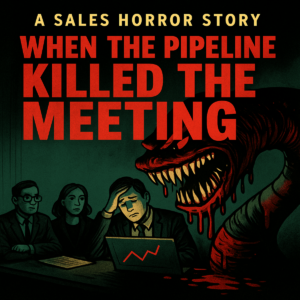Increasing costs require many businesses to raise prices. Rather than just raise prices, what if you could take a strategic approach to cost increases? Following are ideas to get you thinking creatively about how you could handle this challenging situation.
First, consider if you are a core supplier or a vendor.
You are a core supplier if you are a key partner to your customers. You show up on their profit and loss statement as a cost of goods sold. Your offering is key to their success. An example might be a materials supplier to a manufacturer. You are critical to their business operations but you might also sell a commodity that is easy to replace.
You are a vendor if you provide something that is not a core part of the business. For example, you provide office equipment or bookkeeping service. You show up on their profit and loss statement as an overhead expense. In some cases, your offering may be optional or easily replaced. It’s not that your services are not important to your customers. It’s just that they think about you as an expense rather than a cost.
Core suppliers and second-tier vendors may need to approach the price increase conversation differently. Here are some ideas.
Core Suppliers
Here are some strategies that can work for high-relationship businesses where you are a core supplier to your customers.
1. Make It a Business Conversation
Rather than just send out an email or letter, use this as an opportunity to have a business conversation with your customers. Be empathetic. Ask about their business challenges. Be open about how the current business environment has affected your operations. Discuss how you made the decision increase costs to maintain quality rather than sacrifice quality. Explain how you have done this by increasing wages, taking measures to alleviate supply chain issues. You could also share some long-term vision about how you are working to create operational efficiencies that will
2. Discuss Concessions in Exchange For Commitments
When key clients push back on price increases, use this as an opportunity to offer price concessions in exchange for commitment. For example, you might agree to continue previous pricing levels (or a level in between current pricing and the price increase) in exchange for a volume commitment over the next year. Be prepared for this by creating pricing tiers based on volume commitments.
3. Bundle Profitable Services
Similar to the commitment idea above, you could offer a bundle that includes profitable services. If you sell both products and services, consider ways to offer the same product price if the customer bundles in high-margin services. If you don’t have a high-margin service to go with your products, you might consider services you could add. This could open up new lines of profitable revenue.
4. Add Temporary Fees Instead of Raising Prices
Rather than raise prices you can add or raise fees for your products. These could include shipping and/or handling, configuration, or installation. If you think your cost increases will be temporary, consider adding a temporary fee on orders.
Vendors
If you show up as an expense on your customer’s profit and loss statement here are some strategies you can use if you are an overhead expense to your clients.
1. Outsourcing Strategies
One way companies reduce overhead expenses is by outsourcing non-core functions. While your pricing for your products may go up, there may be a way that you can take over the entire function for a client. One recent example is QuickBooks. In addition to providing software, they now provide bookkeeping services. Their customers now have the option to outsource all of their book keeping to one vendor.
2. Vendor Consolidation
Could you provide more products and services to your customer? Another expense reduction strategy is vendor consolidation. From the customer’s perspective, fewer vendors to manage. You might consider offsetting the price increase for customers that are willing to bring more lines of business to you.
3. Rethink Your Offers
The hybrid work environment seems to be here to stay in many industries. Consider how you could re-package your offer to support the mix of people working at the office and working from home. If you sell to businesses, listen to the needs of your current customers. If you sell to individuals, their needs have likely changed as well. This is a perfect opportunity to realign your products and services around their needs. In the process, you can reconfigure pricing to account for cost increases.
4. Resize Your Options
This is a playbook from the food industry. To offset rising prices, some food providers are keeping their price the same but reducing the amount of product. Could you do the same thing without affecting your customer? Maybe there is a way to repackage what you do so that you lower your costs but increase value.
Whether you are a core supplier or a second-tier vendor, there are many creative ways you can approach price increases. In the process you might even discover ways to reinvent your offerings that make you more valuable to your customers while increasing your profits.




